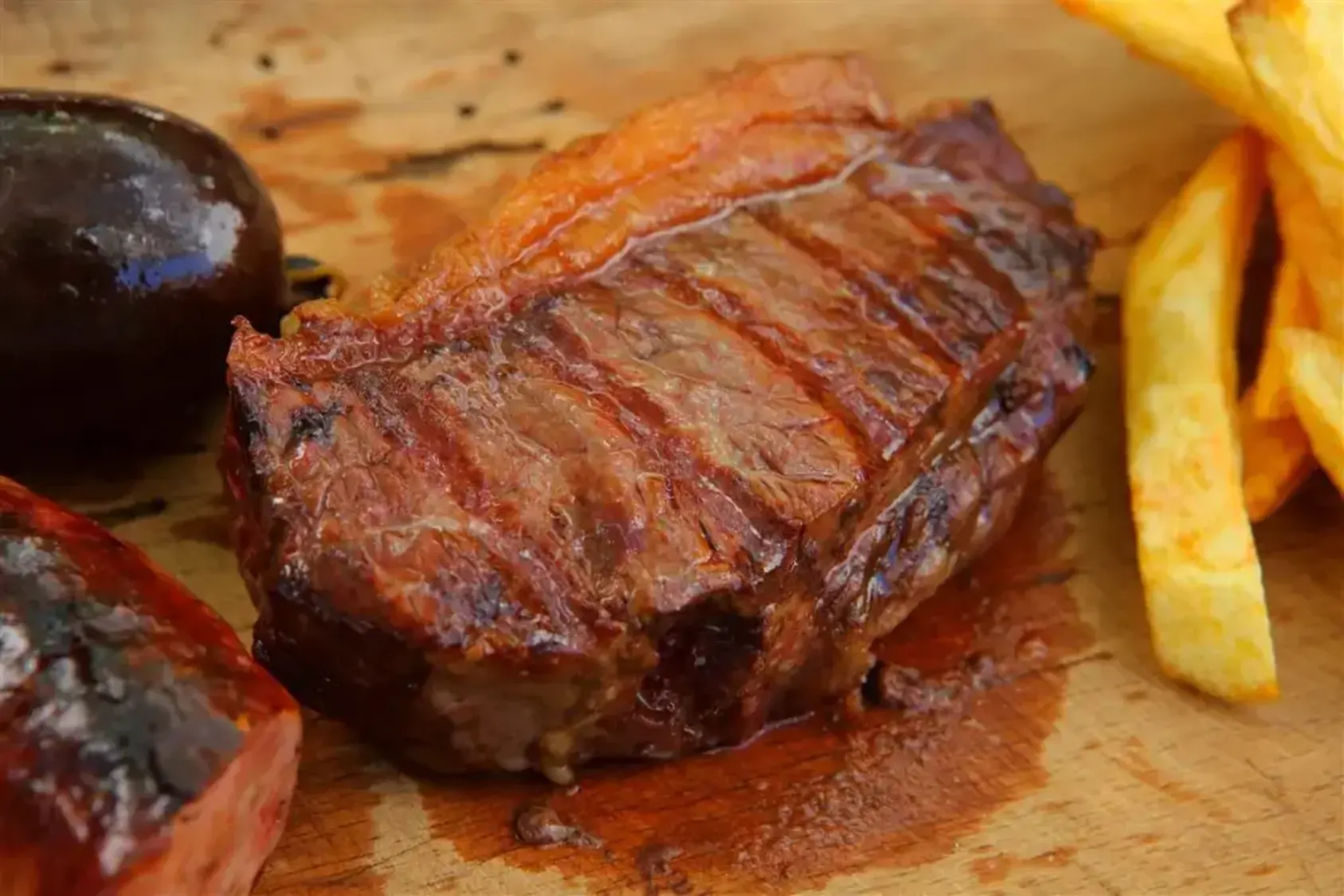
Bife de Chorizo
Premium cut of beef sirloin steak, grilled to perfection.
Ingredients
- •Sirloin steak
- •Coarse salt
- •Black pepper
- •Olive oil
- •Garlic
Instructions
Season
Rub steak with oil, salt and pepper (5 mins)
Rest
Let meat come to room temperature (10 mins)
Grill
Cook to desired doneness on hot grill (25 mins)
Bife de Chorizo is one of Argentina's most beloved steaks - a thick, juicy cut from the sirloin that's prized for its rich flavor and tender texture. Despite its name, it has nothing to do with chorizo sausage; rather, it's similar to what many know as New York strip steak.
This premium cut has been a staple of Argentine steakhouses (parrillas) for generations, representing the country's proud cattle-raising heritage and mastery of beef preparation. The cut comes from the short loin of the cow, offering a perfect balance of lean meat and marbling.
The preparation of Bife de Chorizo is beautifully simple, staying true to the Argentine philosophy that quality meat needs minimal intervention. The steak is typically seasoned only with coarse salt and black pepper, then brought to room temperature before grilling. It's cooked on a hot parrilla (grill) to achieve a perfectly caramelized exterior while maintaining a juicy interior.
While purists prefer their Bife de Chorizo with just salt and pepper, some variations include a light brushing of olive oil or chimichurri sauce. Some also enjoy it with a touch of garlic or fresh herbs, though these additions are considered optional in traditional Argentine cooking.
In Argentina, this steak is typically served as the centerpiece of a meal, often accompanied by simple sides like grilled vegetables, crisp salads, or papas fritas (french fries). It's commonly ordered "jugoso" (medium-rare) to best appreciate the meat's natural flavors and tenderness.
From a nutritional standpoint, Bife de Chorizo is an excellent source of high-quality protein, iron, and B-vitamins. However, as with all red meats, it should be enjoyed in moderation as part of a balanced diet. Those watching their fat intake might want to trim visible fat before cooking, though many argue this reduces the steak's characteristic flavor.
